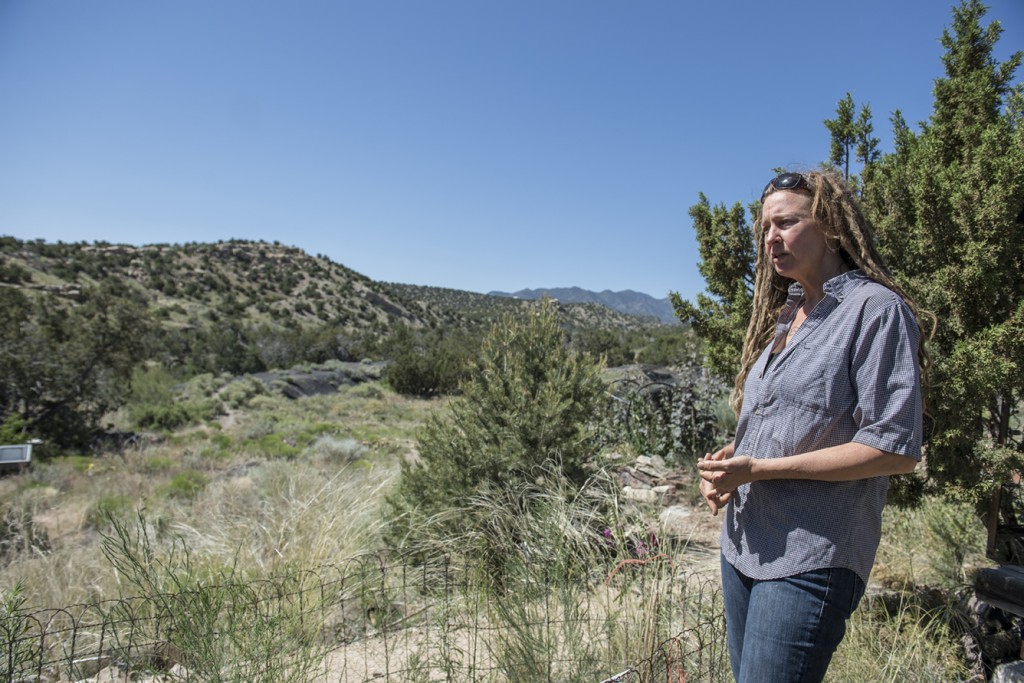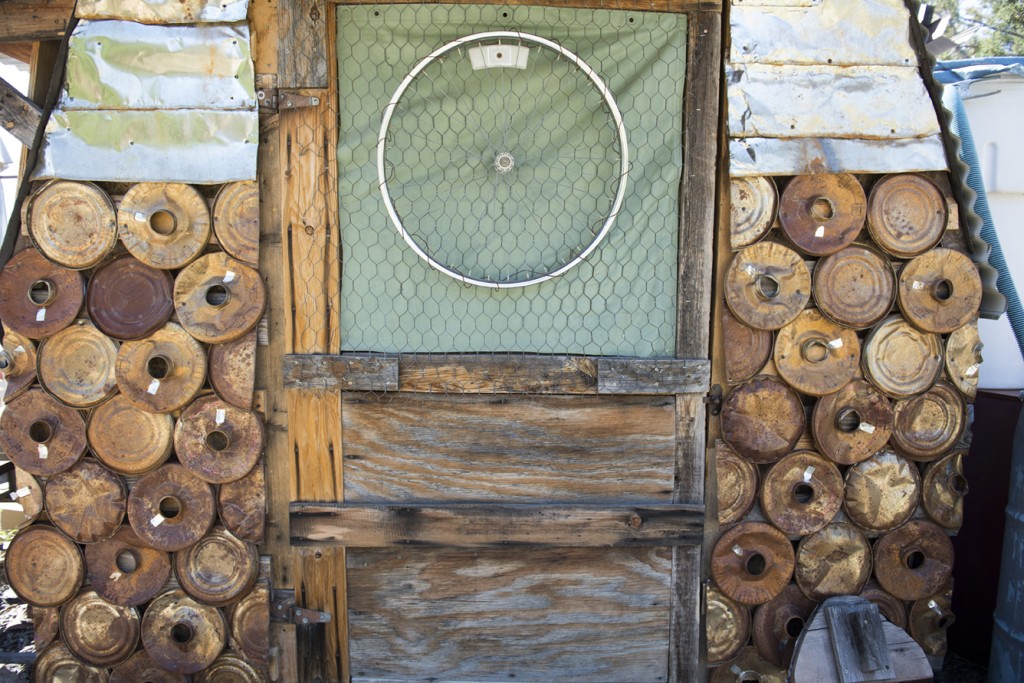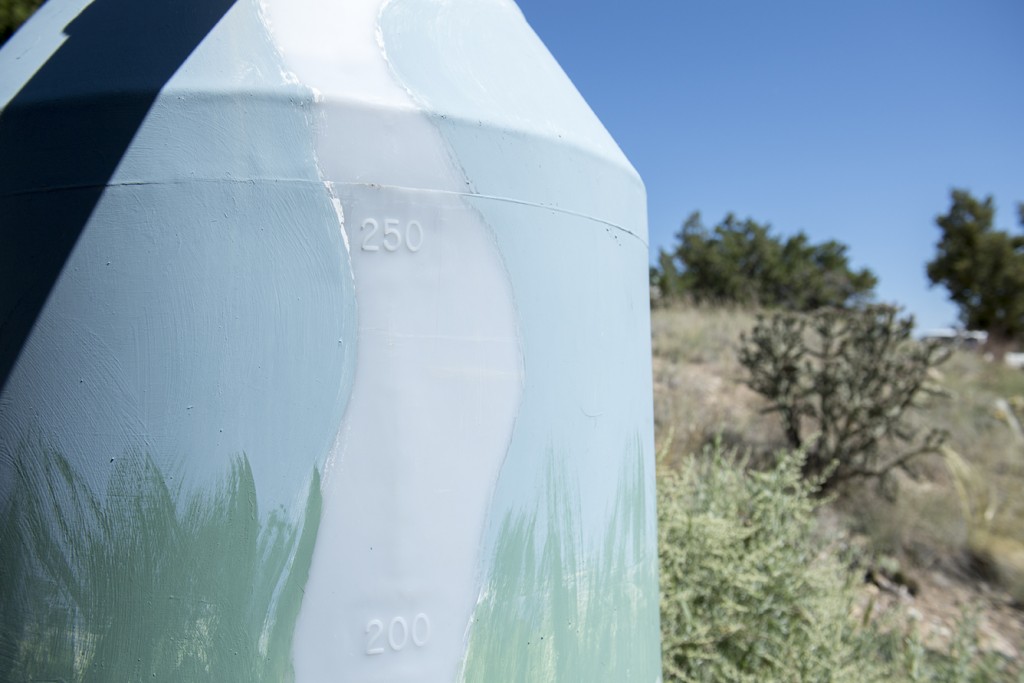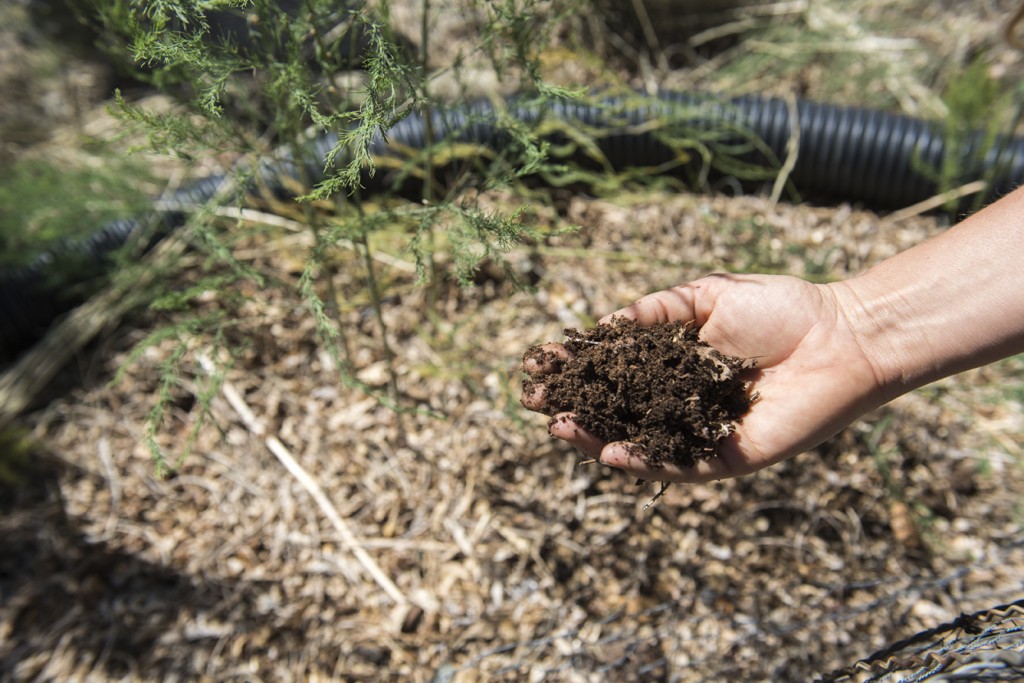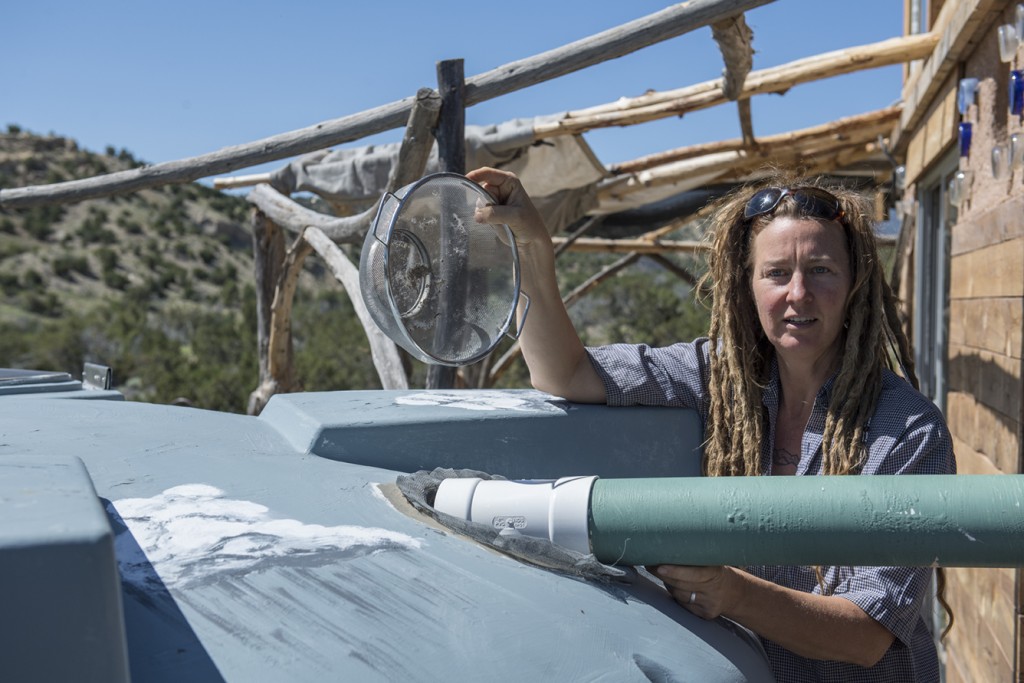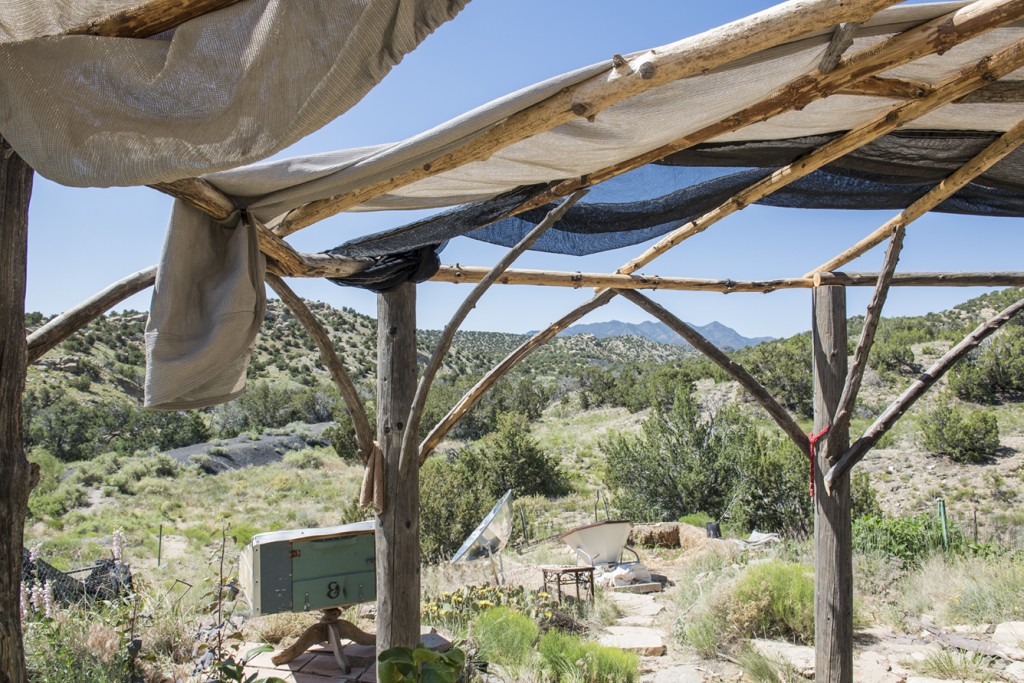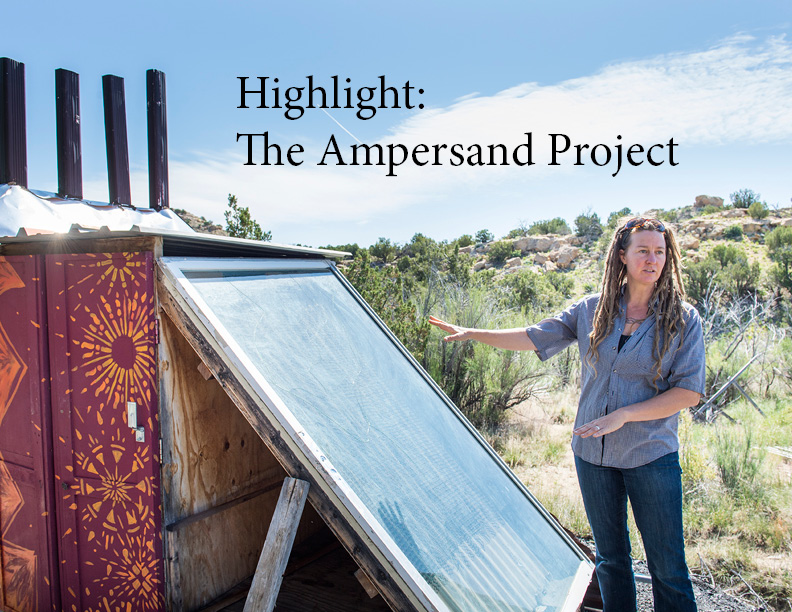Ampersand Sustainable Living Center
The Ampersand Sustainable Living Center is a small education institution established on the tenets of reducing fossil fuel dependency, rejuvenating the natural ecology and landscape, conserving and budgeting water, and facilitating growth and interdependency within the human community. Using only captured rainwater, Ampersand is able to grow a bounty of food for the center and for community members using soil restoration techniques that promotes both human and plant health.
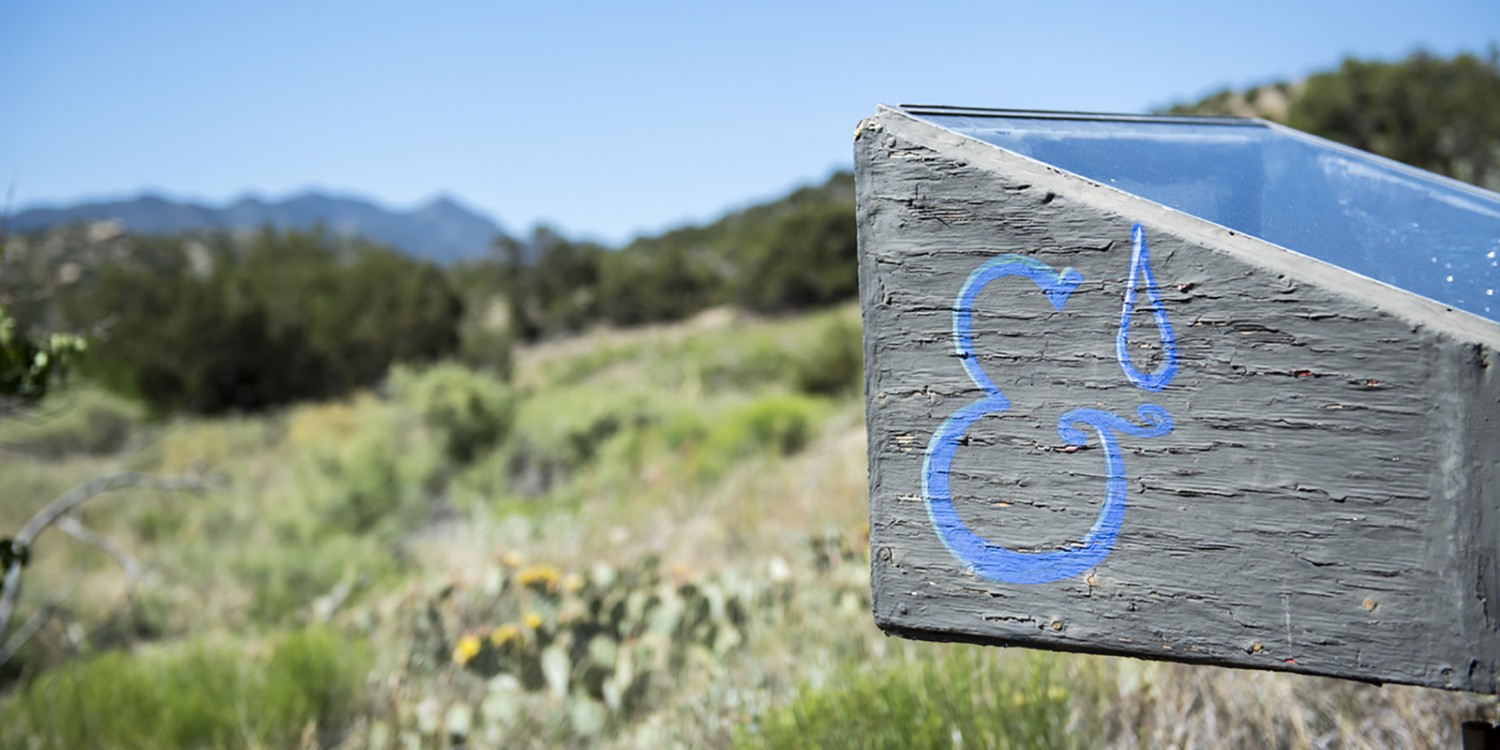
Finding a better balance with nature is, of course, a worthwhile goal. And an organization in Northern New Mexico is going further, toward a philosophy and practice of helping nature revive. Ampersand Sustainable Living Center calls this “regenerative design.” It comprises the restoration of nature, conservation, sustainable lifestyles and community interdependence.
Ampersand’s co-founder and director, Amanda Bramble, has taught land restoration and organic growing since the mid-1990s. She’s also taught technologies like passive solar design and concepts like permaculture, which views living systems holistically and looks to nature for lasting solutions to human problems.
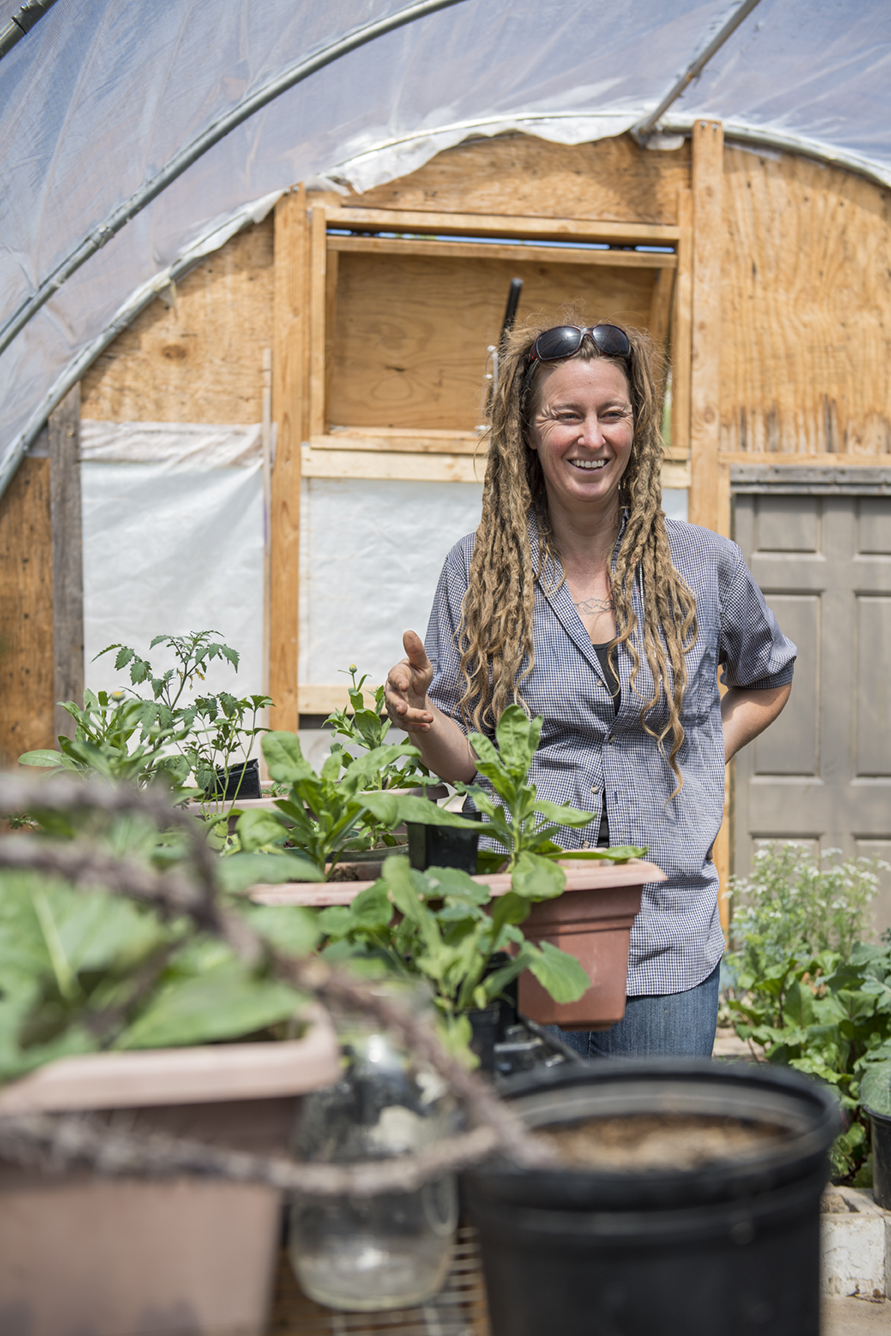
Amanda’s experience in this field is impressive. Before Ampersand, she worked with the Center for Biological Diversity, a nonprofit based in Arizona; the experimental community of Arcosanti, also in Arizona; and the San Francisco League of Urban Gardeners.
She also consults and leads credit classes and continuing education classes at Santa Fe Community College, teaching on such topics as permaculture, high desert gardening, grey water systems, arid land restoration, sustainable kitchens and solar cooking.
Amanda shares, “I’ve always been an earth lover. I learned about permaculture when I was around 19. When I was applying to colleges, I knew I wanted to (study) land restoration.”
She and her husband Andy, the Center’s co-founder, built an off-the-grid home not far from Ampersand’s location in the in the Madrid/Cerrillos area. They extended their experiment in green living when they designed and helped build another house on the Ampersand site.
“We’ve discovered the edges of sustainability — of how sustainable we can be here. Not just with food, but with energy and building materials, everything.”
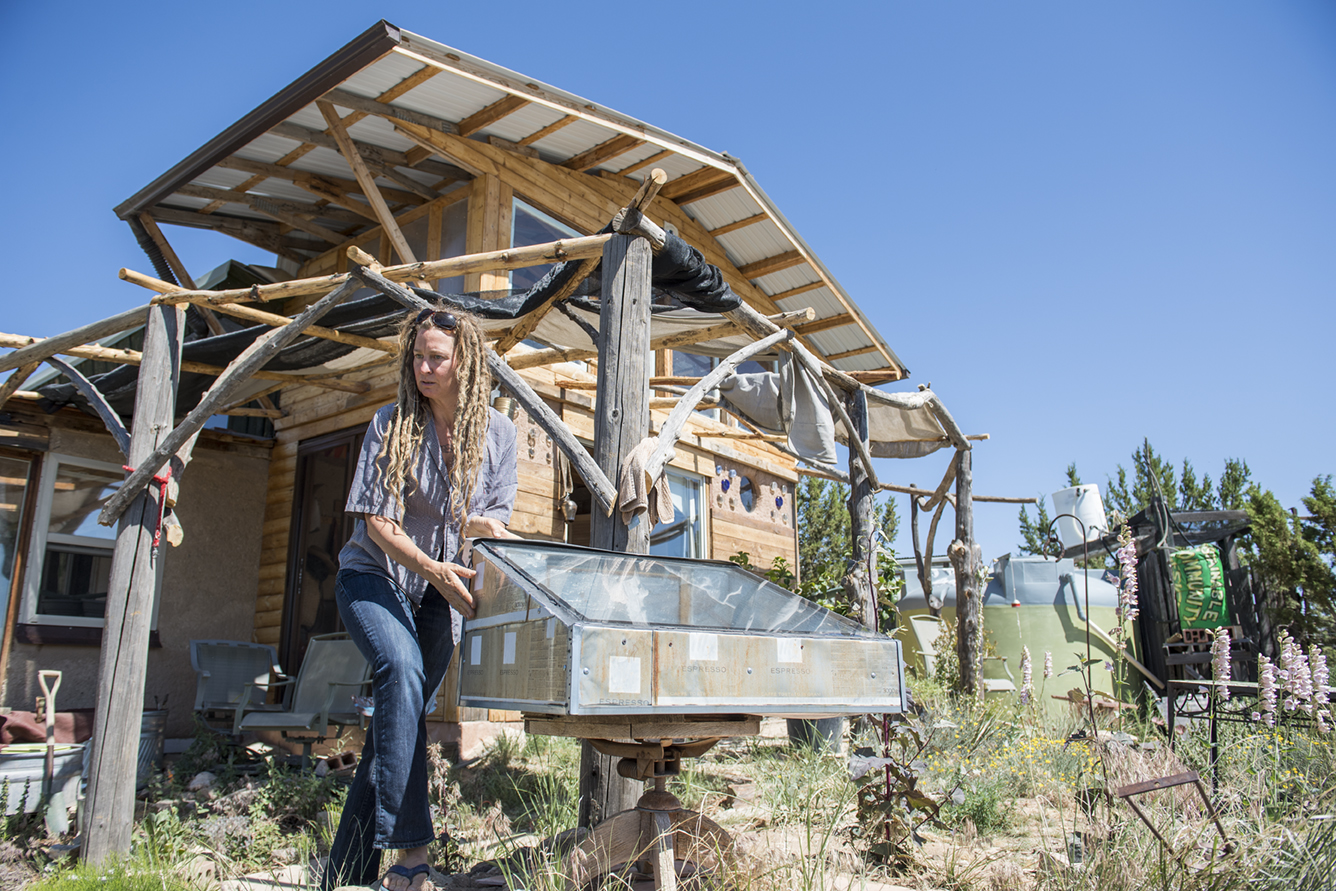
The Ampersand project began in 2004, with the construction of the Brambles’ home and other structures on the 38-acre site. Natural materials were used throughout. The buildings are warmed by passive solar energy. Rainwater is cached — the only source of domestically used water as well as irrigation for the Center’s gardens and greenhouses — and all water is recirculated throughout the property to maximize its use in the arid landscape.
Rainwater is cached — the only source of domestically used water as well as irrigation for the Center’s gardens and greenhouses — and all water is recirculated throughout the property to maximize its use in the arid landscape.
Ampersand grows much of its own food. During our visit, Amanda shows us vegetables, herbs, fruit trees. Her relationship with the land and the plants seems to go deep.
The Center counts its own independence from fossil fuels as a primary goal. To that end, it has installed solar cookers and water heaters, a solar dehydrator and photovoltaic panels. Some of these devices are quite low-tech.
“You can make and maintain systems like solar cookers yourself,” Amanda states. “You don't need to be an electrician. And it doesn't waste any energy or materials.”
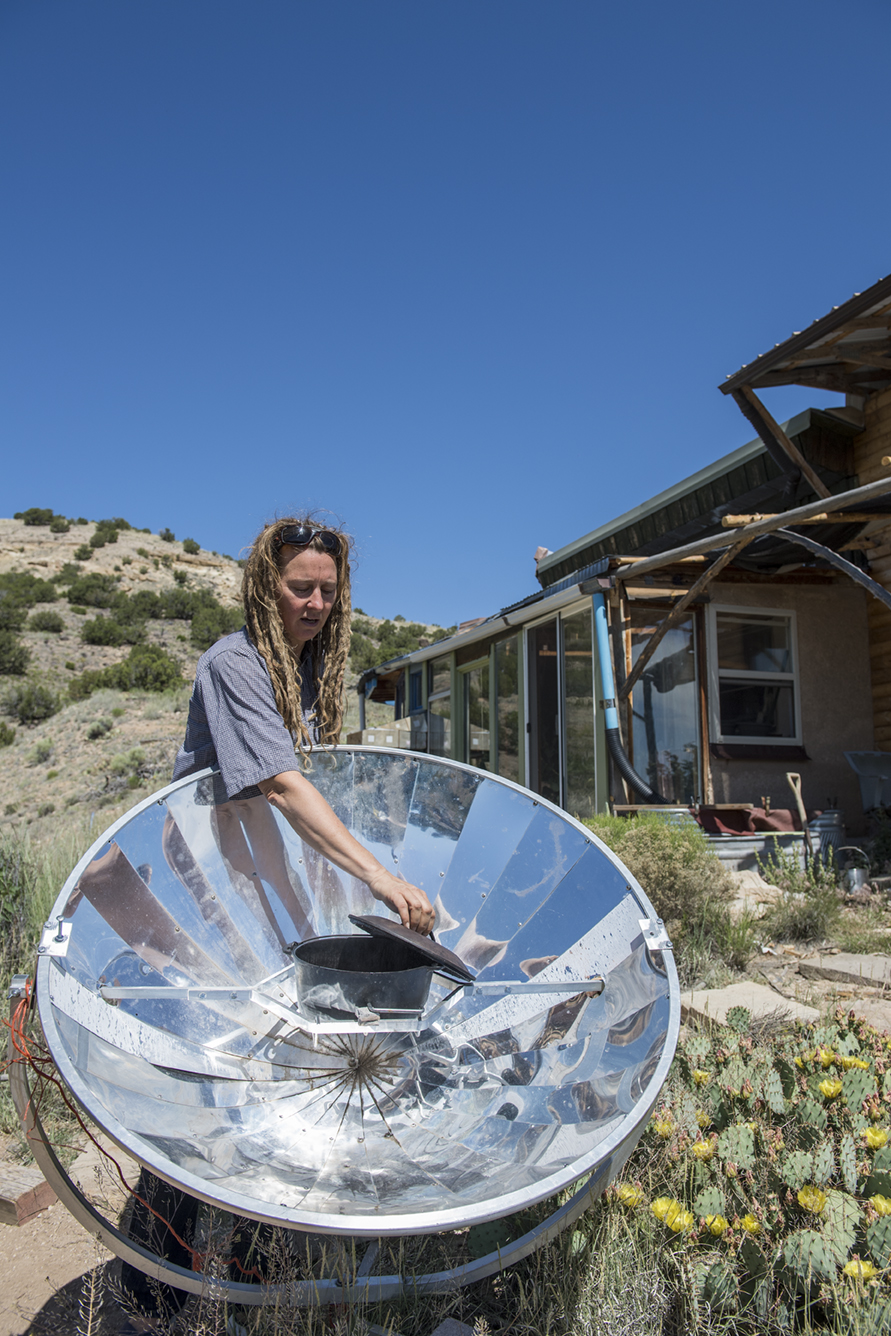
Green practices are part of Ampersand’s philosophy, but so is collaboration with, and reliance on, one’s neighbors.
Amanda explains, “It goes back to barter systems that used to thrive around this region. We don't necessarily have generations of families living like that anymore, at least not in my community. But we do have communities that are related by local context. I think it’s important to develop those connections in any way we can, to grow our community and the relationships that are important for community resilience.”
She cites Ampersand’s cooperative arrangements with a community garden in Madrid (which she co-managed for several years) and another in Santa Fe, as well as a local cohousing project. (Cohousing combines private homes and shared spaces to foster independent living.) The Center trades veggie seedlings in the spring for garden produce in the summer.
The solar dehydrator offers another example of interdependence. “It’s another thing that we offer to our community. I can chop up 60 pounds of fruit — or greens, or whatever — and dry it all at once. It's nice to have a large dehydrator because, when the fruit is available, it all comes at once. It's either going to get processed or eaten, or it’s going to rot.”
Ampersand offers many opportunities to learn and contribute, including residencies, retreats and work/trade arrangements. Its educational programs include native plant hikes, workshops on organic composting and courses on sustainable land practices. Programs for school-age children can be presented at the Center or at local schools.
“Soon we’re going to offer what’s called a water systems walkthrough,” Amanda says. “We’ll start at the top of our watershed and go through the site, looking at the water harvesting earthworks, the rain catchment systems and things like that.” Her experience cultivating plants in arid desert climates “trained me to understand the preciousness of water.”
To learn more, please visit the Ampersand website and check its event calendar.
If you’re a local producer, buyer, agricultural business or community member, your participation is integral to the success of The AgriGate.
Join us at the table and become part of our County’s food community story.
